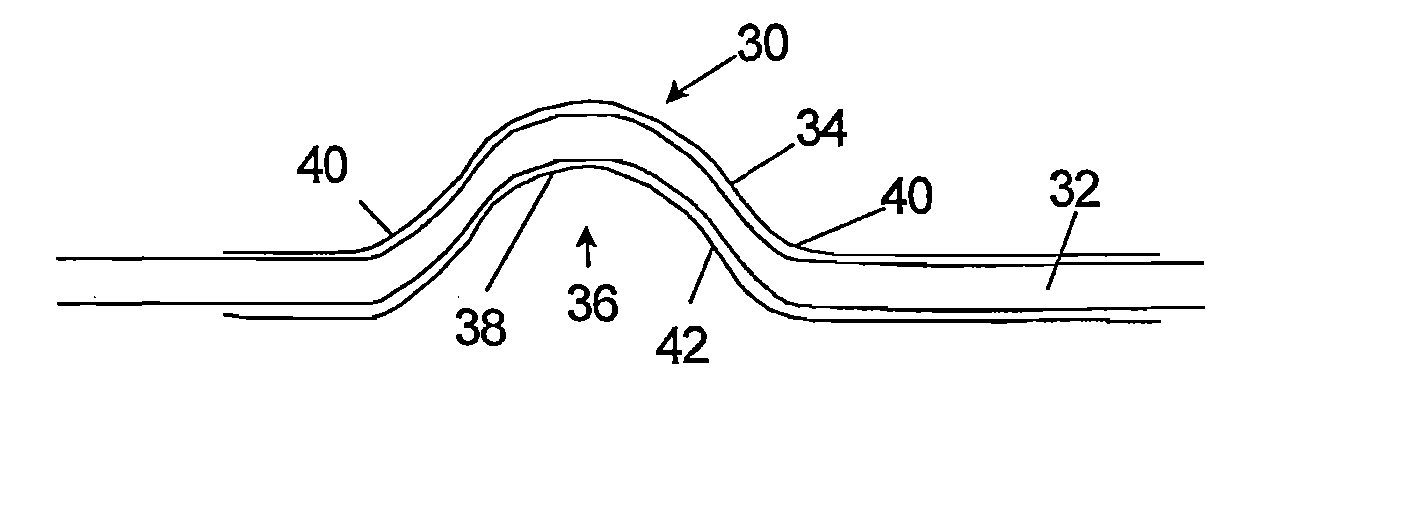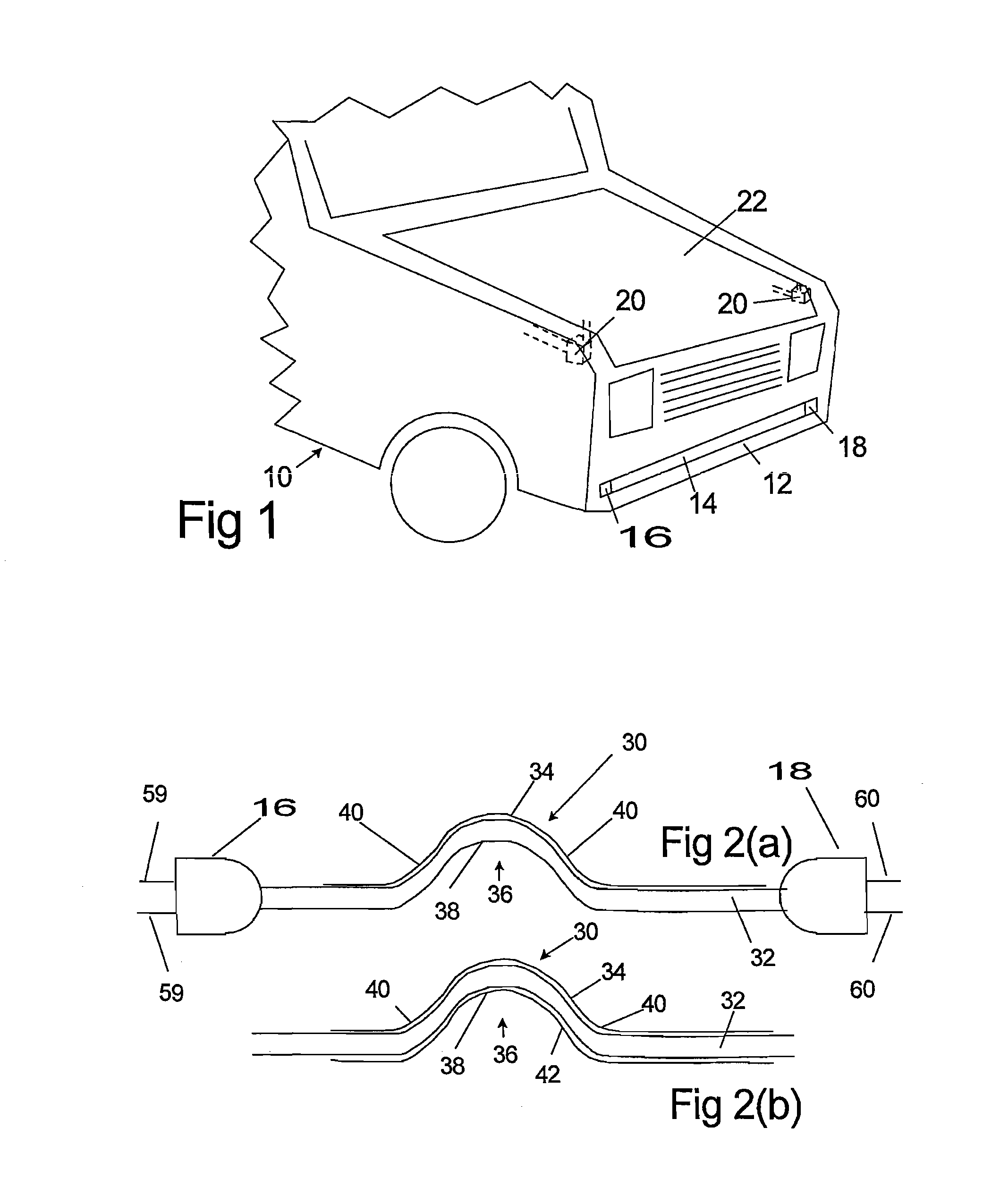Method and apparatus for sensing impact between a vehicle and an object
a technology of sensing apparatus and vehicle, applied in the field of sensing impact, can solve the problems of obtaining clear satisfactory indication, limited flexibility of components, unlikely return to working condition, etc., and achieve the effect of reducing possible injury to pedestrians
- Summary
- Abstract
- Description
- Claims
- Application Information
AI Technical Summary
Benefits of technology
Problems solved by technology
Method used
Image
Examples
Embodiment Construction
[0048]FIG. 1 illustrates the front end 10 of a vehicle having a bumper 12 extending across at the front. Attached to the bumper 12 is an optical fiber sensor array 14. In the particular arrangement shown, a light emitting source 16 and a light detector 18 are connected to the fiber or fibers in the array 14, one at each end. As described later light source 16 and light detector 18 can both be at the same end. The light source and light detector are connected to a control system (not shown) in the vehicle. Devices 20 are provided to “pop” or lift the hood 22, on receipt of a signal from the control system.
[0049] The invention provides various forms of optical fiber arrays and various forms of sensors for detecting, classifying and measuring inflected and non-inflected bends, their progression in time and to calculate shape, mass and velocity of intruding objects and also to identify such objects by shape, resilience, vibration and dampening. It is not necessarily a requirement that ...
PUM
 Login to View More
Login to View More Abstract
Description
Claims
Application Information
 Login to View More
Login to View More - R&D
- Intellectual Property
- Life Sciences
- Materials
- Tech Scout
- Unparalleled Data Quality
- Higher Quality Content
- 60% Fewer Hallucinations
Browse by: Latest US Patents, China's latest patents, Technical Efficacy Thesaurus, Application Domain, Technology Topic, Popular Technical Reports.
© 2025 PatSnap. All rights reserved.Legal|Privacy policy|Modern Slavery Act Transparency Statement|Sitemap|About US| Contact US: help@patsnap.com



